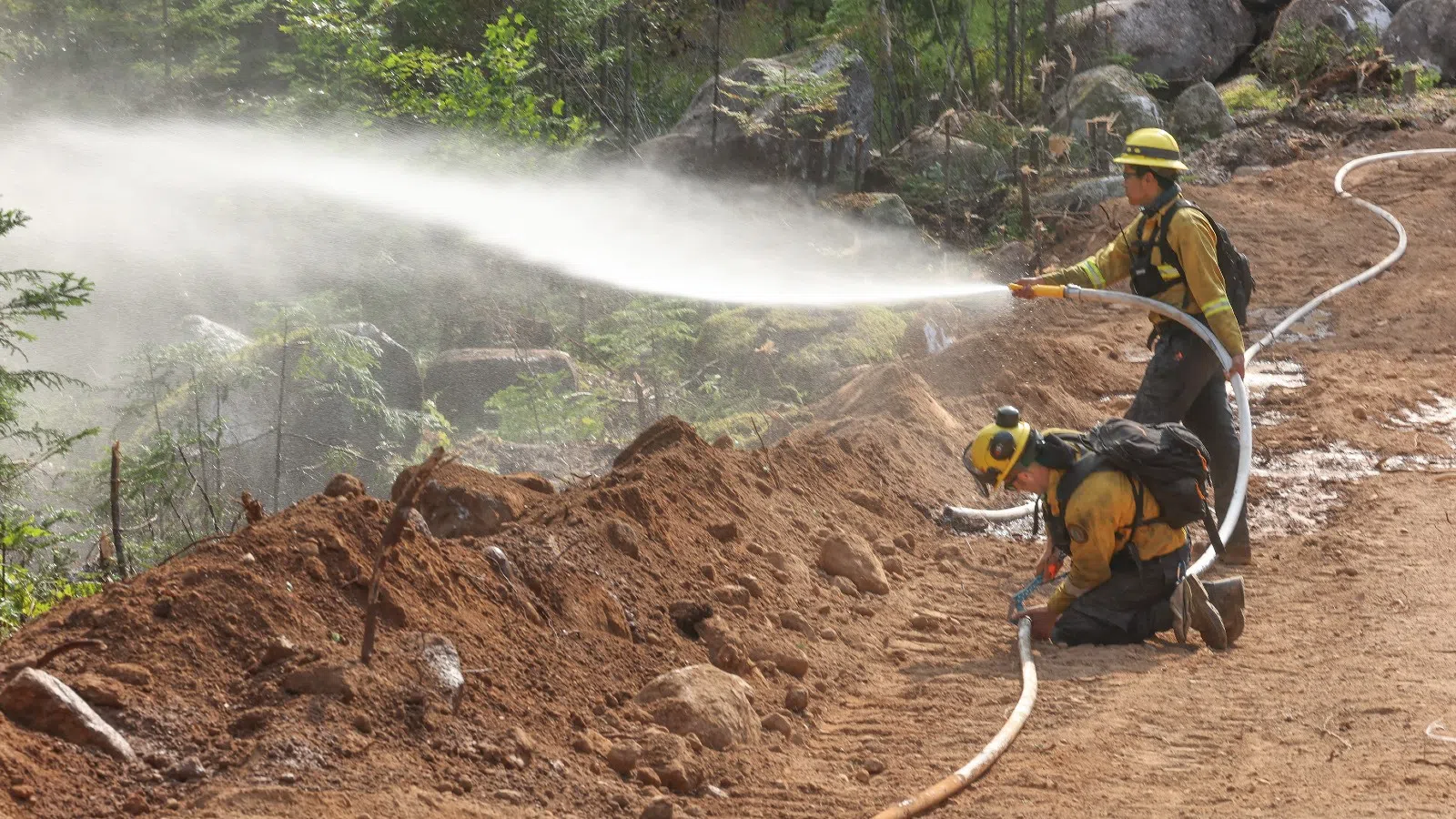The large wildfire burning near Long Lake remains out of control, with new growth reported on its western edge.
Officials now estimate the fire has reached 3,255 hectares, driven by strong winds, dry conditions and challenging terrain, as of Saturday afternoon.
Crews are reinforcing containment lines and protecting values at risk, particularly in areas where access is limited.
Fire guards are holding where they’ve been built, and aerial support continues to assist ground teams, according to the Department of Natural Resources.
Starting Sunday, a comfort centre will be available at the Bridgetown Fire Hall (31 Bay Rd) to support those affected by the Long Lake wildfire.
The site will be open daily from 10 a.m. to 4 p.m., offering a place to rest and access basic services.
For overnight stays, the Canadian Red Cross continues to provide 24/7 accommodations. Residents can reach them at 1-800-222-9597.
Meanwhile, the Middleton campus of Nova Scotia Community College has been temporarily closed.
On Aug. 24, Bridgetown Fire Hall (31 Bay Rd) will be a comfort centre for residents & evacuees of the Long Lake wildfires & will operate from 10am to 4pm daily.
— Nova Scotia Emergency Management (@NSEmergency) August 23, 2025
Overnight accommodations available 24/7 through the Red Cross. Call 1-800-222-9597.
NSCC – Middleton is now closed. pic.twitter.com/dUxVwYeaCf
Rain is forecast for Monday, but officials warn that a single day of precipitation won’t be enough to shift the situation.
“We really need long, protracted rain to help here,” said Scott Tingley, manager of forest protection with the Department of Natural Resources.
“Even 10 millimetres would help, but it’s not going to change everything.”
Tingley adds that what’s needed is sustained rainfall over multiple days.
Wind remains a key variable in wildfire spread, repeatedly complicating containment efforts and threatening new areas.
Recent shifts to the east and northeast pushed parts of the fire westerly, contributing to its growth.
“Wind continues to be a major factor. It can push the fire in unpredictable directions and challenge our containment efforts,” Tingley explained.
Crews are prioritizing mitigation efforts in anticipation of a forecasted shift to the south and southwest, adjusting tactics as conditions evolve.
Officials say Hurricane Erin’s lingering effects continue to influence wind conditions, with further increases expected.
More than 70 homes are now protected by sprinkler systems, which have shown promising results, according to Andrew Mitton, director of regional operations with the Department of Emergency Management.
No structural damage has been reported.
Personnel from Ontario, Nova Scotia and local volunteer departments remain on scene, supported by aircraft and heavy equipment.
Firefighters from Prince Edward Island have completed their deployment and returned home.
Evacuation support continues through the Canadian Red Cross and Salvation Army.
Mitton said most residents have settled into temporary accommodations.
Officials say morale among crews remains strong, despite long hours and challenging conditions.
Fatigue is being closely monitored, and reinforcements are being brought in as needed.
Scott Tingley also added that the Northwest Territories air tanker group is contracted to remain in Nova Scotia until the end of September.









